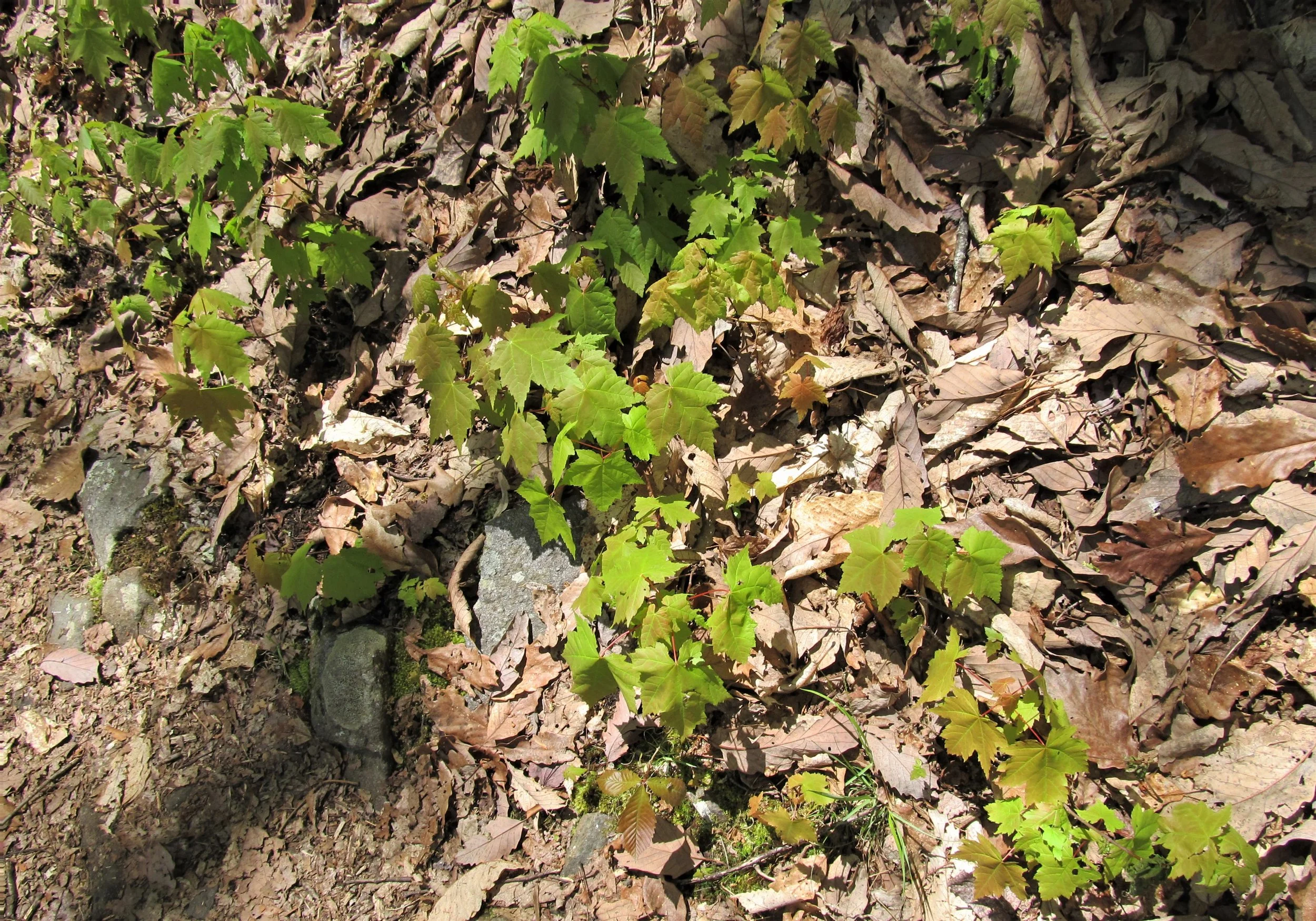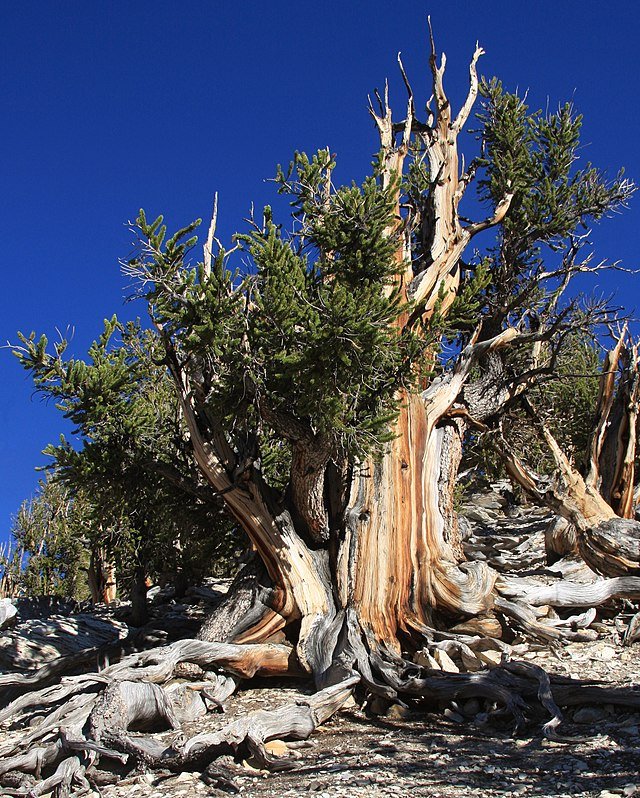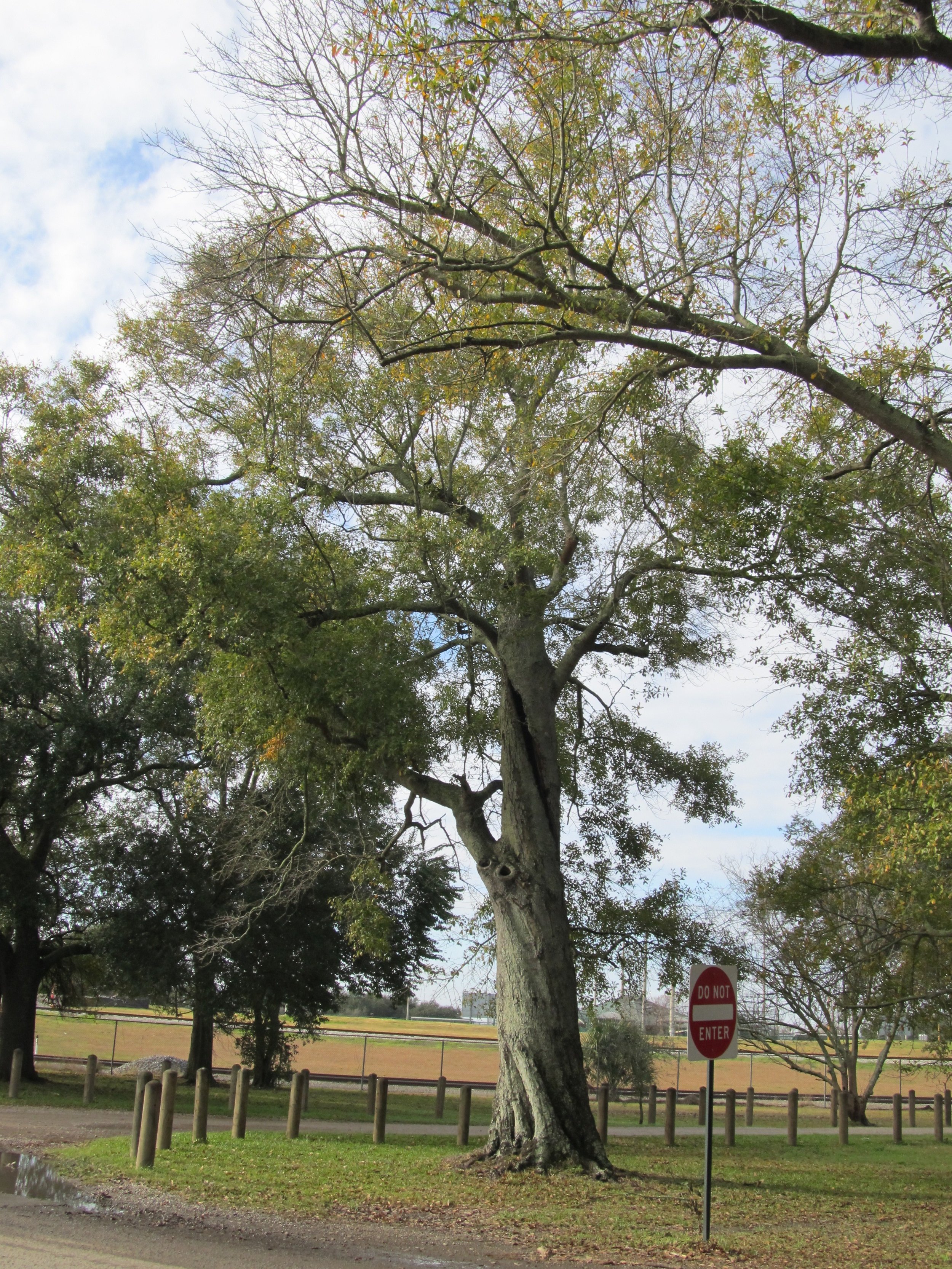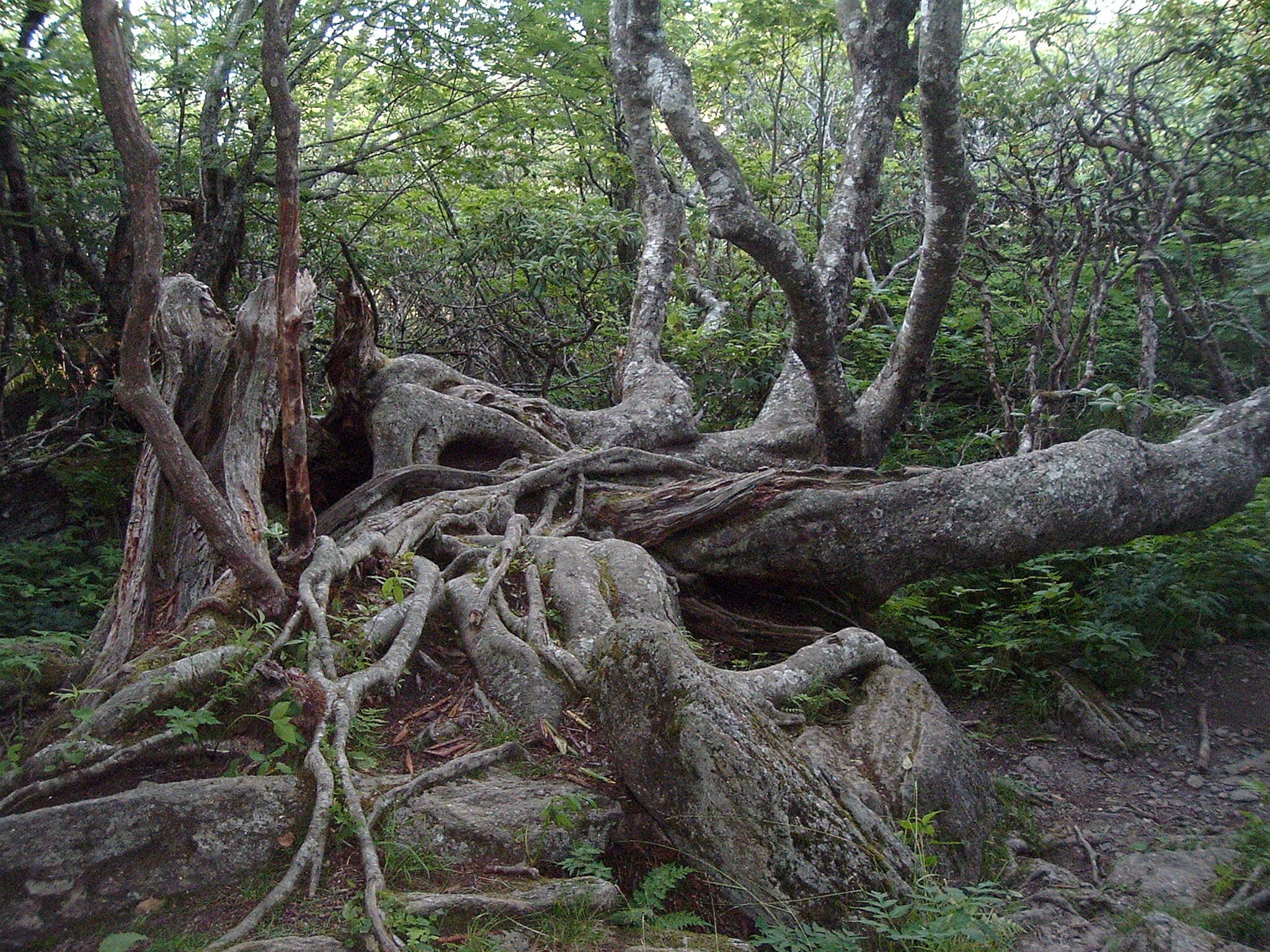The Age Thing Again - Part 1
To see an old tree is an amazing experience. Many people do not see them, or, if they do, they do not recognize what they are looking at.
How old does the tree need to be to be thought of as old? My answer to that would be more than one hundred years. That’s just how I look at it, though. There are people who would scoff at that notion and tell you a one-hundred-year-old tree is just getting started, and this is true in the broad sense because trees can live hundreds or even thousands of years. Most of them, however, do not. The overwhelming majority of trees die when very young. Even among those that survive to maturity, relatively few live to attain an age of a century or more, whether growing in a cultivated landscape or a National Forest.
Red maple (Acer rubrum) seedlings growing on the forest floor, alongside a trail. Few, if any, of these will reach even the sapling stage.
The question of how old a tree must be to be properly thought of as old should also be considered in light of the experiences of the person being asked. Some folks live close by places where very old and famous trees are known to be, or they have visited such places, so they have seen trees that are much greater in age than one hundred years. But again, most people have not had that experience. The trees most people commonly see are considerably younger. Most of those people who've seen genuinely old trees regard the experience as special, because trees so old are rare. These folks should be excused for engaging in the occasional bit of one-upsmanship: You think a one-hundred-year-old tree is old? On our trip out west we saw trees that were thousands of years old! I have not yet seen the bristlecone pines out west, which are thought to be the oldest of trees, although I’ve seen plenty of photographs of them. I’ve looked at photographs of many ancient trees from around the world, but seeing an image of something is not the same as standing in the presence of the thing itself, in person.
Ancient bristlecone pine (Pinus longaeva) in California. Attribution: Wikimedia Commons
I have seen some old trees, though; just not the oldest.
Another way to think about it is that one hundred years is longer than most people live. Although it is possible for trees and a number of other creatures to live longer than that, encountering any living thing older than a century in age should be impressive to any person, just as a matter of respect. This is why I say one hundred years makes an old tree.
Beyond all that, one hundred years is enough time for a tree to begin to show the unique effects of life's struggle. Some of these effects are obviously dramatic. A lightning strike that does not kill a tree can produce a dead zone within the tree's trunk that spirals down its length, from the place where the bolt made contact right down to the ground, where the electrical charge went into the earth.
Water oak (Quercus nigra), a lightning strike survivor, is now hollow but otherwise healthy.
A tree might be shoved over by another tree falling on it, or by a ferocious wind, or it might have had to lean way out from where it was rooted in order to reach sunlight and then fell over of its own weight, and then continued to live while in a recumbent or totally horizontal position.
Eastern redcedar (Juniperus virginiana), toppled long ago but still living.
Some trees may have their entire tops removed by some catastrophic event but not be killed, and over time reorganize themselves efficiently enough to carry on the processes necessary to sustain prolonged life.
Chestnut oak (Quercus montana), living on after decapitation.
All these possible events in a tree's existence, and numerous others, can produce in it a striking physical image of the struggle to survive, provided the tree does indeed survive. Often it does not. The longer a tree lives the greater the chance that some life-threatening event will impact it. You might see younger trees exhibiting the signs of such an event, but it may be that those trees are still in the process of succumbing to their misfortune. It can take years for a tree to die. When you see an older tree that has suffered a catastrophic event but survived and kept growing, and is now decades past that event but still bearing the scars of it, the tree will stop you in your tracks. Or, it will if you happen to look at it and understand what you’re seeing.
Yellow birch (Betula alleghaniensis)
Not all old trees have had such a calamitous life, however. Not all old trees bear such noticeable signs of their struggle to live. But all old trees have struggled to some extent, because life is as full of hazard and difficulty for trees as it is for people, and the longer one sticks around the more it wears on that individual, and the more that individual wears the effects of it. Time takes its toll. The little everyday struggles of life add up. For an old person this adding up manifests itself in sagging and wrinkled skin, thinning and graying hair, eyeglasses and corrupted teeth, stooped posture, redistributed body weight and stiff-jointed movement. There are many other ways a long life will make itself felt by the person who lives it, but here we are concerned with visual effects, the kind that can be seen by an observer. Trees are fundamentally different from humans in the way they are structured and the way they experience life. Still, they are alive and the experience of life in the field of time produces a physical effect on them just as it does on us. We are more familiar with the way age affects human appearance, but if we closely observe trees we can plainly see the effects age has on them, too.
Old person
Old tree
If you were to ask people how to identify an old tree, some would likely say that size might be an indicator. Trees grow slowly, so a big tree is an old tree, and the biggest trees are the oldest. This is not entirely correct because species and site conditions have more to do with tree size than age does. A forty-year-old tuliptree growing in a rich cove in the forest will be many times taller than a four-hundred-year-old table mountain pine growing on an exposed rock outcrop at high elevation. Even given equally beneficial growing conditions, a tuliptree will likely grow taller than a table mountain pine because of genetics — they are a taller growing species. Likewise, the girth of a tree's trunk is not a reliable proof of age, because this feature is also influenced by genetics and environment. Whether considering trees in the landscape or miniaturized trees in pots, size is not an accurate indication of age.
So what is?
To be continued…








